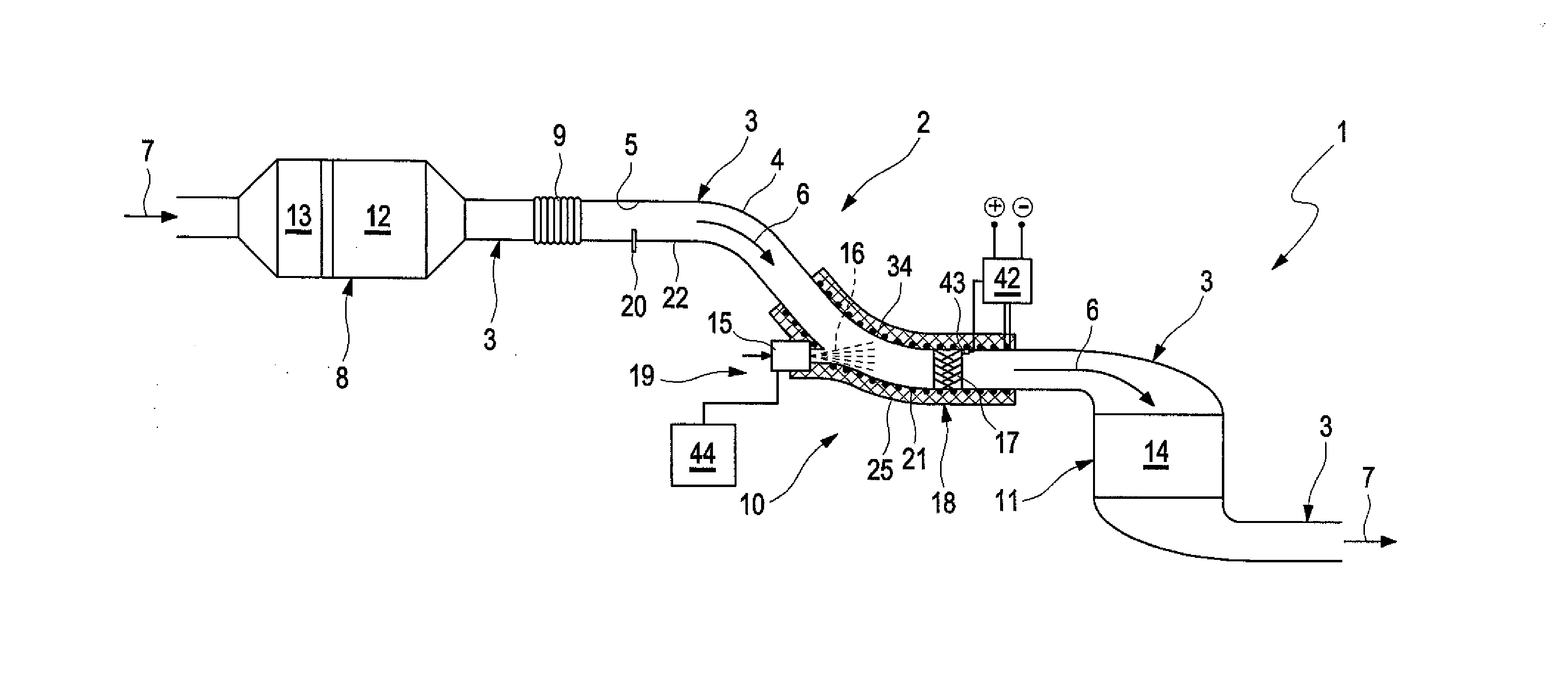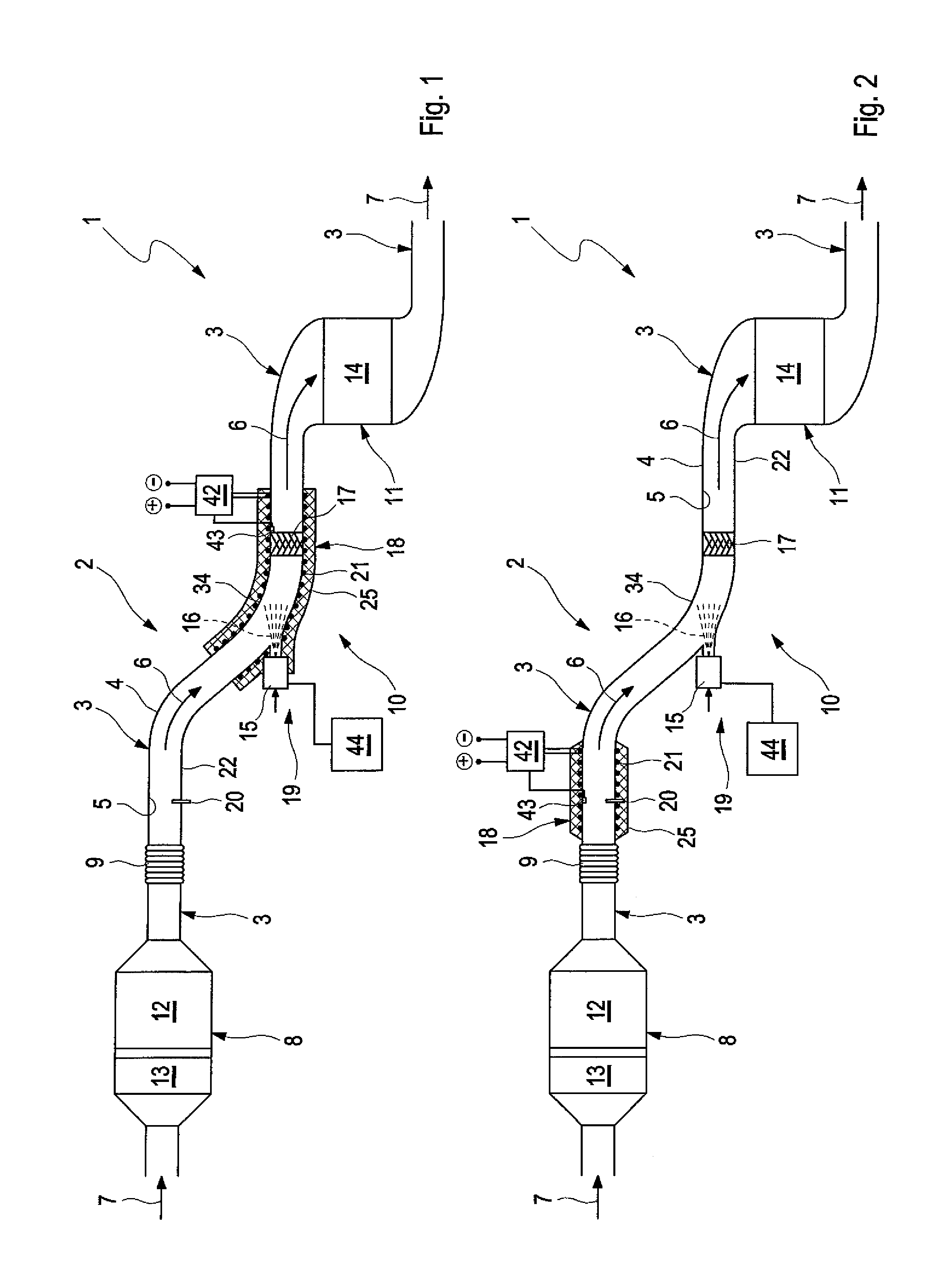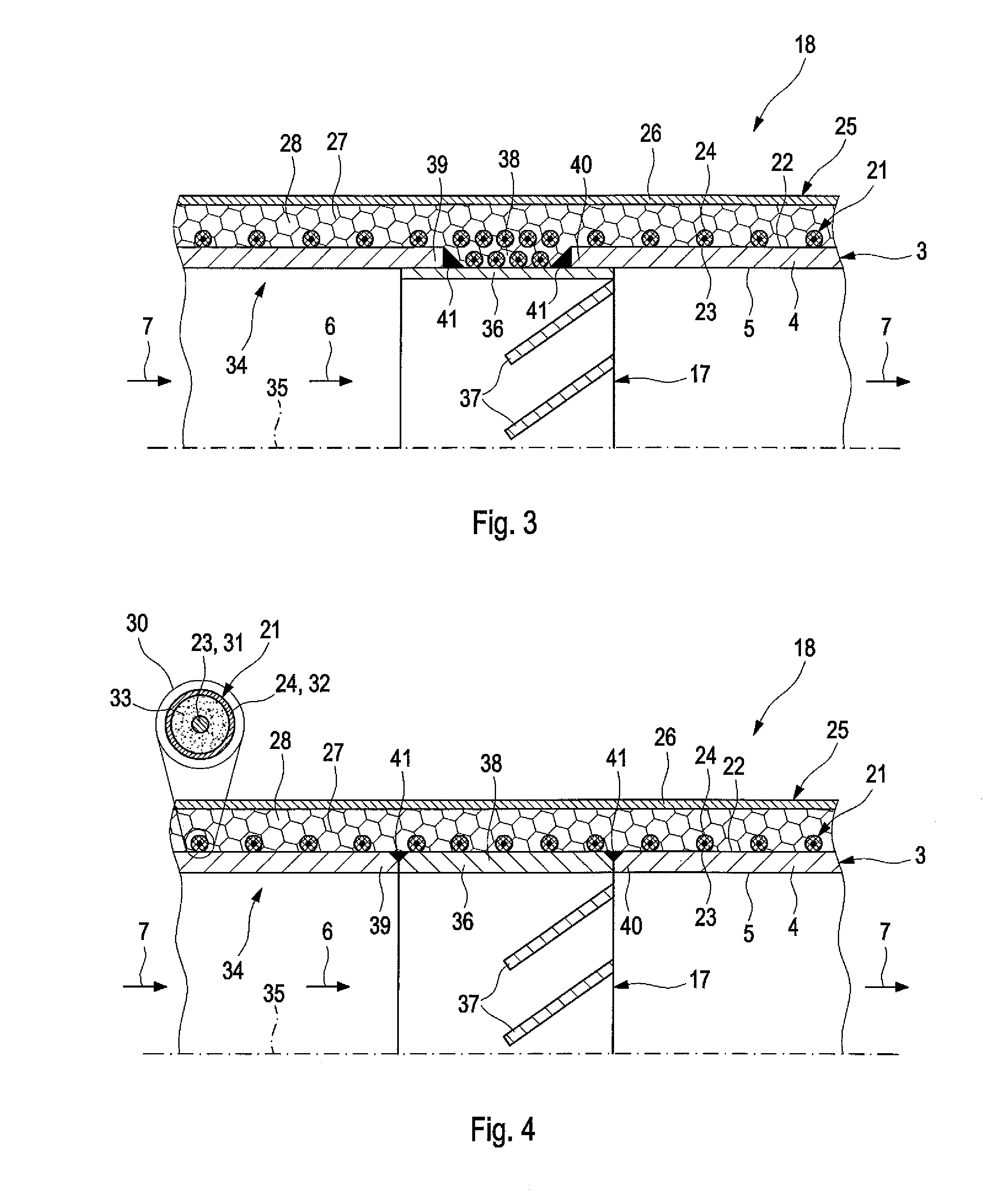Heating device for an exhaust system
a technology of exhaust system and heating device, which is applied in the direction of exhaust treatment, machines/engines, mechanical equipment, etc., can solve the problems of electrically disconnected pipes between the pipes, and achieve the effect of reducing the risk of undetectable condensation and/or deposit formation, and reducing the amount of energy required for this
- Summary
- Abstract
- Description
- Claims
- Application Information
AI Technical Summary
Benefits of technology
Problems solved by technology
Method used
Image
Examples
Embodiment Construction
[0033]Referring to the drawings, corresponding to FIGS. 1 and 2, an exhaust system 1 for an internal combustion engine, not shown here, comprises an exhaust line 2, which leads from an engine block of the internal combustion engine to a tail pipe of the exhaust system 1.
[0034]The exhaust line 2 contains for this at least one exhaust pipe 3, which has a pipe wall 4. The pipe wall 4 defines on its inner side 5 an exhaust gas path 6 indicated by arrows in FIGS. 1 and 2 for guiding an exhaust gas flow 7, which is likewise indicated by arrows. Within the exhaust line 2, the exhaust pipes 3 connect individual components of the exhaust system 1, which are arranged in the exhaust line 2, with one another. Purely as an example, a particle filter 8, an uncoupling element 9 and an SCR catalytic converter 11 of an SCR system 10 are provided in FIGS. 1 and 2. The particle filter 8 contains a particle filter element 12 and, upstream of the latter, an oxidation catalytic converter element 13. The ...
PUM
 Login to View More
Login to View More Abstract
Description
Claims
Application Information
 Login to View More
Login to View More - R&D
- Intellectual Property
- Life Sciences
- Materials
- Tech Scout
- Unparalleled Data Quality
- Higher Quality Content
- 60% Fewer Hallucinations
Browse by: Latest US Patents, China's latest patents, Technical Efficacy Thesaurus, Application Domain, Technology Topic, Popular Technical Reports.
© 2025 PatSnap. All rights reserved.Legal|Privacy policy|Modern Slavery Act Transparency Statement|Sitemap|About US| Contact US: help@patsnap.com



